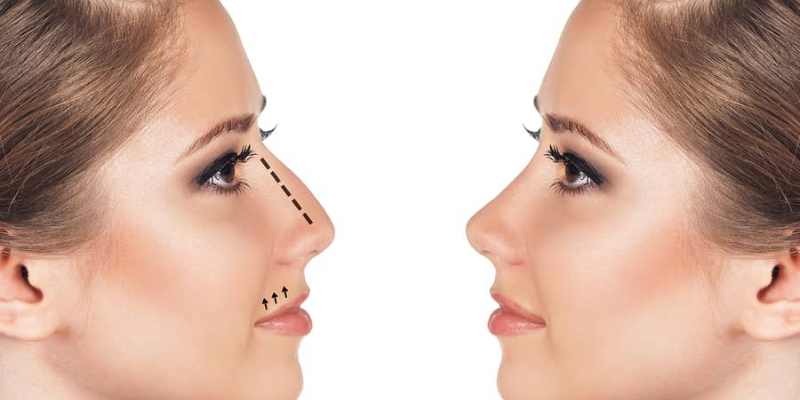Rhinoplasty Deviated Septum
If you have problems with how your nose looks or works, knowing what causes rhinoplasty deviated septum may help you decide what to do. Even though they both try to fix nose problems, they may have very different goals. Doctors perform rhinoplasty on people with a deviated septum to improve their quality of life and self-esteem. If you are worried about your nose and want to fix it, make sure you know the difference between rhinoplasty and septoplasty before you choose one.
Septoplasty and rhinoplasty are medical procedures that can only be done by doctors who are licensed to do so. In either case, you need either general or local anesthesia.
The surgery called a septorhinoplasty does both of these things at once. The nose is changed for looks, and at the same time, the septum is straightened.
Can Rhinoplasty Fix Deviated Septum?
If you aren’t sure if rhinoplasty or septoplasty is the better surgery to fix your problems, make an appointment with your doctor, a facial plastic surgeon who is double board certified and has a lot of training in nasal surgery. If you have a crooked nose and a deviated septum that makes it hard for you to breathe, a septoplasty with rhinoplasty can fix both your functional and cosmetic problems at the same time. The main goal of a septoplasty is to fix a deviated septum while keeping the outer curve of the nose. It is important to know that a septoplasty may be a good time to fix a big or bulbous nasal tip, a dorsal hump, or other cosmetic issues while the patient is already in surgery.
Whether you choose a septoplasty, a rhinoplasty, or a combination of the two, you will need to take time off work while your body heals and recovers. Most people are out of work for about five to seven days. After a rhinoplasty, there may be some swelling for the first six to twelve months, but most of it goes away in the first few weeks. You may need splints or stitches in your nose after treatment, but they are usually taken out after a week.
Septoplasty And Rhinoplasty
Through a surgery called rhinoplasty, people can change the size, shape, and symmetry of their noses to make their faces look more even. Rhinoplasty may be the best option if your nose isn’t symmetrical, if it has a bump or depression on the bridge, if your nose tip is too big or hangs down, or if your nostrils are too big or too wide.
Your surgeon can help you decide whether you want an open or closed rhinoplasty. From open surgery, there won’t be much of a scar on the columella, which is the bridge of tissue that connects your nostrils. Most scars go away after the healing process done, leaving only a thin line that can’t see. It’s not a disease that will kill you. Even though a closed rhinoplasty doesn’t leave any cuts that can see, some people might not choose it.
The surgeon customizes each rhinoplasty to the patient’s nose because everyone has different problems with how their nose looks. Some treatments involve using cartilage grafts from different parts of the nose, ear, or even a rib.
Septoplasty
A septoplasty is a type of surgery that can fix problems with how the nose works, like a septum that crooked or has moved. A deviated septum could have caused by an injury to the nose in the past or by something that happened later in life. If you have trouble breathing out of one or both nostrils or if an injury to your nose has made it hard for you to breathe, you may be a good candidate for a septoplasty to straighten your deviated septum and make it easier for you to breathe.
Depending on how bad your septal deviation is, septoplasty can either do with the nose open or with the nose closed. During a closed surgery, a small cut made in the mucosa, which is the inside lining of the nose, to get to the cartilage and bone of the septum. The septum may then partially remove, trim and move, or completely rebuilt using grafts, depending on what each patient needs.
Most of the time, these procedures do while the person is completely asleep. So, if your nose only needs minor maintenance, you and your doctor may decide to use local anesthetic and intravenous sedation. Most of the time, you can leave the hospital and go home the same day after either surgery. Also, both surgeries usually take less than three hours. However, this mainly depends on how many problems need to fix.
You and your surgeon will figure out together what the best way to fix your problems is. If you ask him or her any questions you might have about either surgery, you can feel good about your treatment and ready for surgery.


